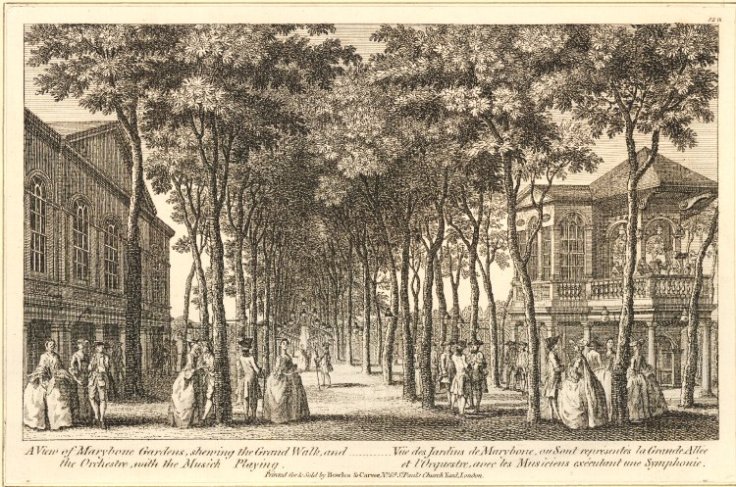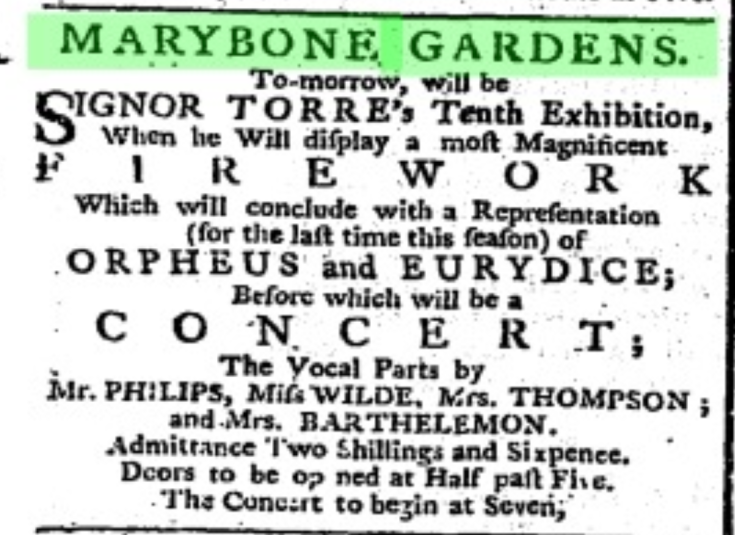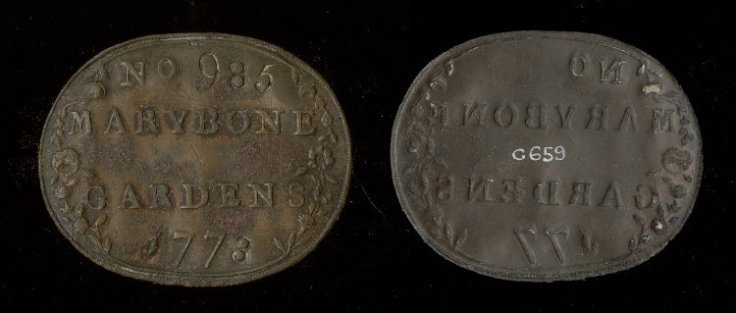Marylebone Pleasure Garden originated in the mid 17th century as a garden and bowling green. During the 1730s Marylebone Gardens increased their admission price to encourage a more genteel crowd. Marylebone Gardens became known for its orchestras, fireworks, and a titillating mix of people.
In Letter XXI in Volume II of Frances Burney’s Evelina, Evelina writes how she “[spent] the evening in Marybone-Gardens, here Mr. Torre, a celebrated foreigner, was to exhibit some fireworks” (Burney 233). Below is a 1765 -1800 drawing of the Marybone Pleasure Gardens, Orchestra, and fireworks display.

Evelina describes the gardens as “neither striking for magnificence nor for beauty” (Burney 233). Below we see the ad Burney used as reference to describe the fireworks show Evelina would have seen. While the gardens are lackluster to Evelina she describes the orchestra as “a pleasure” (Burney 233) and fireworks described as “really beautiful and told with wonderful ingenuity, the story of Orpheus and Eurydice” (Burney 233).

Evelina and her party, consisting of Madame Duval, The Branghtons, M. Du Bois, Mr. Smith, and Mr. Brown, enter Marybone Gardens for two shillings and sixpence. This was a more affordable price which allowed for there to be an assorted group of attendees. Featured below is the tokens for entrance into the gardens from 1773.

Evelina gets separated from her party post-fireworks show and seeks refugee with fellow women but doesn’t realize they are women of the night and not women of genteel. Evelina, eventually realizing her error, tries to separate herself from the ladies of the night but ultimately fails until she runs into Mr. Brown. This encounter then leads to a shocking interaction between Lord Orville and Evelina, where he finds her family is not as aristocratic as he previously assumed. This is a prime example of how Marybone Gardens had assorted clientele for a place of entertainment in London, due to its price point. Marybone Pleasure Gardens closed around 1777 and has faded from the architectural history of London. What was once a large portion of London life has now faded into oblivion.
Citations
- Burney, Frances. Oxford University Press, New York, 2002.
- 1770 Map
- Marybone Gardens Photo
- Tokens
- Burney Newspaper
-Written by Allison Sonsteby, a student at Washington and Jefferson College for ENG320